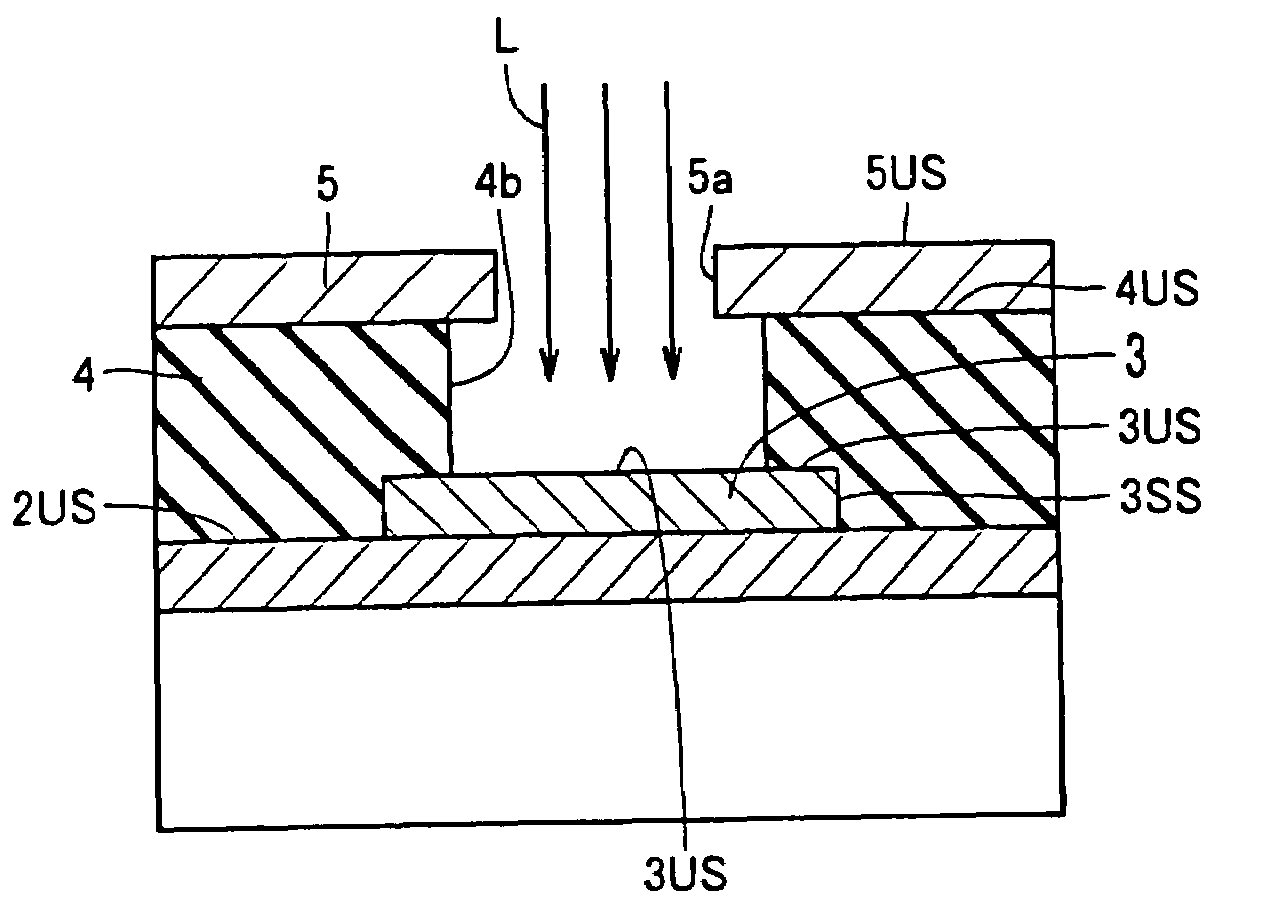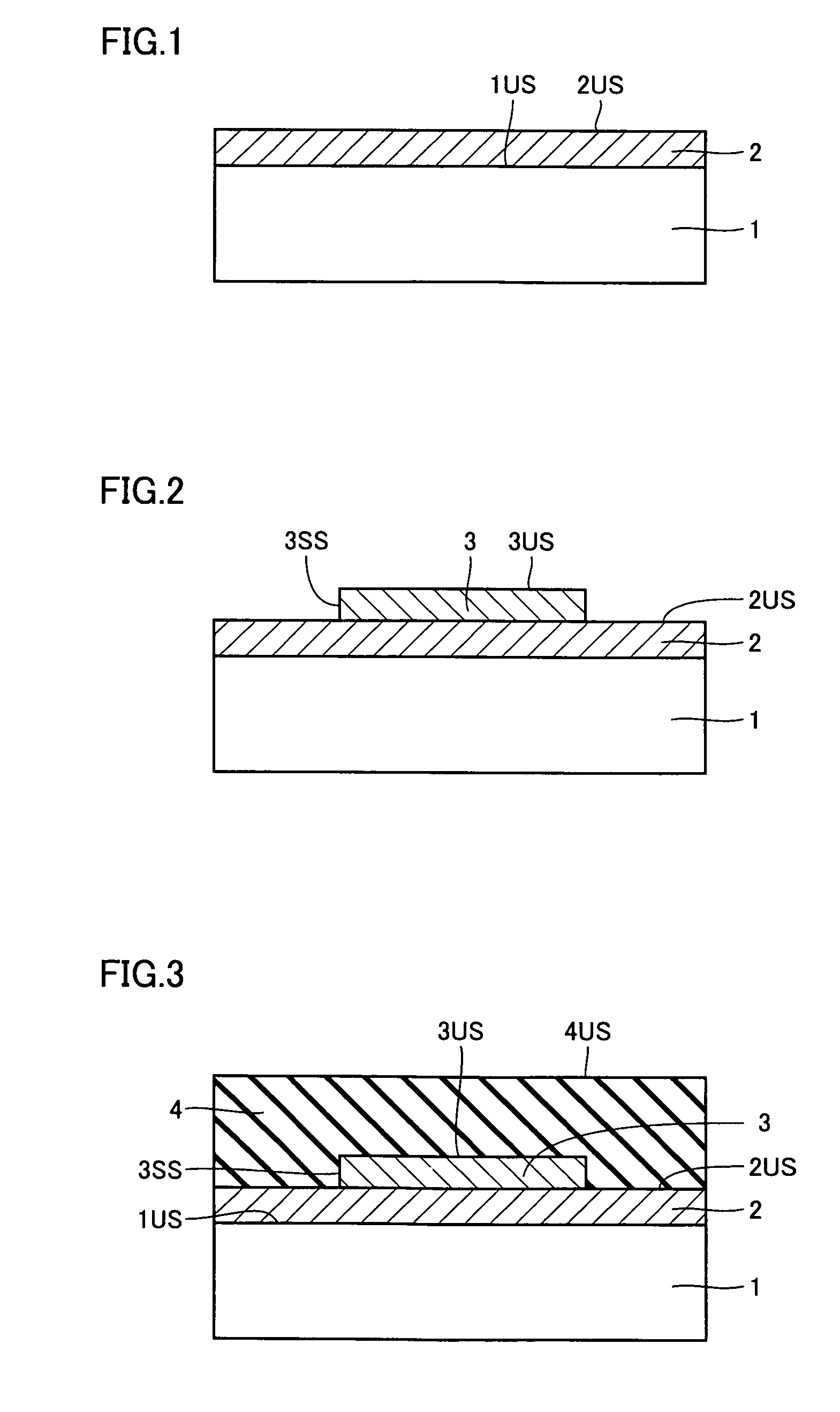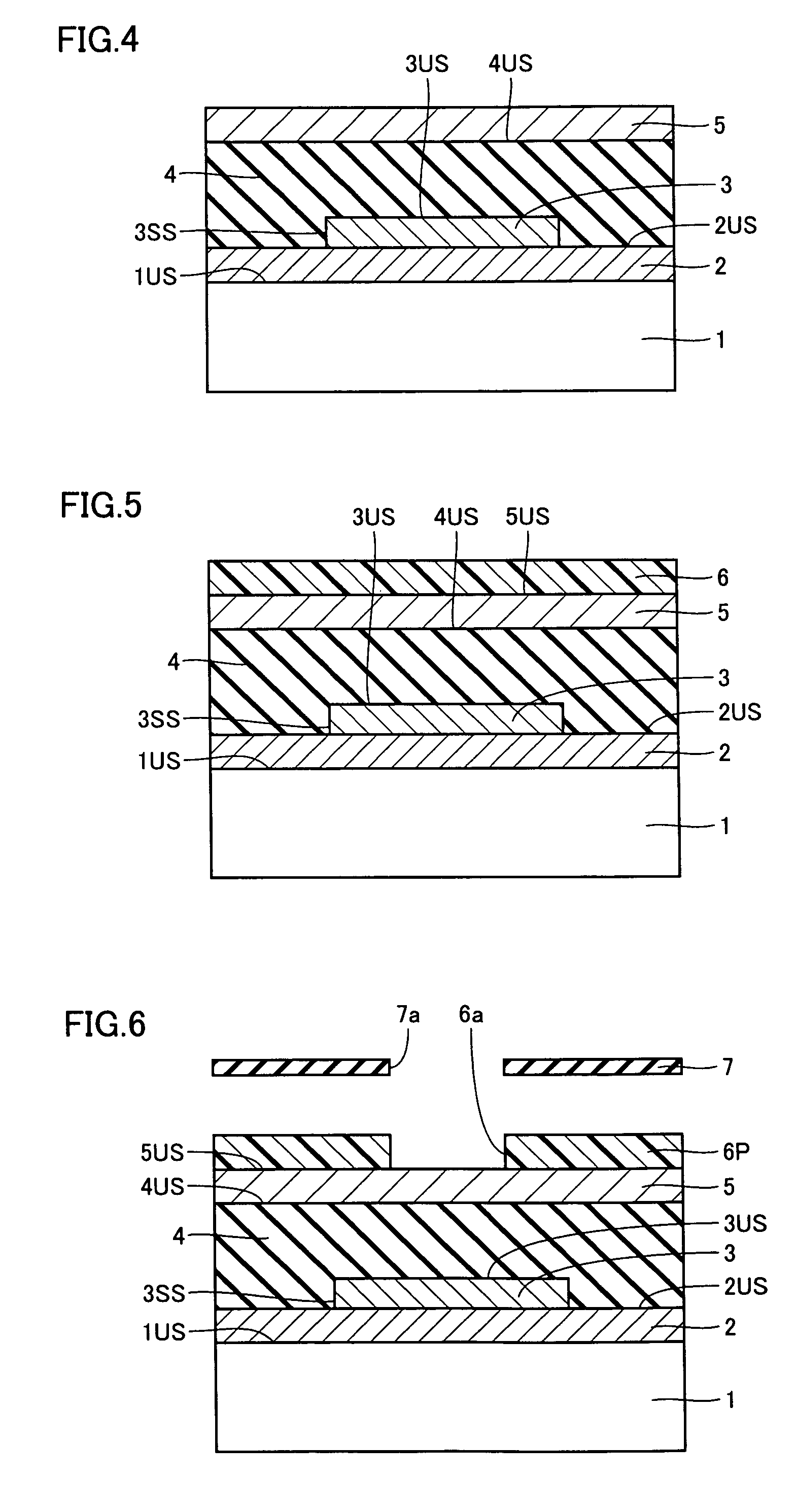Method of manufacturing electron emission source
a technology of electron emission source and emission type, which is applied in the manufacture of electrode systems, electric discharge tubes/lamps, nanoinformatics, etc., can solve the problems of difficult to control the shape of the opening in the insulating layer, damage to the exposed surface and affecting the electron emission performance of the carbon nanotube layer
- Summary
- Abstract
- Description
- Claims
- Application Information
AI Technical Summary
Benefits of technology
Problems solved by technology
Method used
Image
Examples
first embodiment
[0025]The step of manufacturing an electron emission source used in an FED back panel according to the present embodiment will initially be described with reference to FIGS. 1 to 10.
[0026]1: Formation of Cathode Electrode 2 (See FIG. 1)>
[0027]Initially, a cathode electrode 2 is formed on an upper surface 1US of a glass substrate 1, using sputtering. Cathode electrode 2 is implemented, for example, by an ITO film which is a transparent conductive film. For example, the ITO film has a film thickness of 0.3 μm.
[0028]Thereafter, cathode electrode 2 is processed to have a linear shape using photolithography or the like. Here, photolithography refers to a photomechanical process using light, electron beam or the like to transfer a pattern onto a planar substrate in a semiconductor manufacturing technology. Though various steps such as application, exposure, etching, removal, and the like of a resist film are carried out in this process, these steps are common and detailed description ther...
second embodiment
[0084]According to the first embodiment, after the second dry etching step, the exposed surface of the carbon nanotube layer is irradiated with the laser beam to improve the electron emission performance of the carbon nanotube layer. Instead of irradiation with the laser beam, as shown in FIG. 11, an adhesive 10 and an adhesive tape base material 11 may be used to peel off a surface layer portion of carbon nanotube layer 3 so that the carbon nanotubes are raised, thus improving the electron emission performance of carbon nanotube layer 3. Here, adhesive 10 and adhesive tape base material 11 are shown as examples of an adhesive material, and an adhesive material other than the tape may be employed.
[0085]Adhesive 10 has a thickness of approximately 50 μm. Adhesive 10 along with adhesive tape base material 11 is adhered to an upper surface 5US of gate electrode 5, and adhesive 10 is pressed into openings 5a and 4b with an appropriate pressure, so that adhesive 10 reaches the bottom sur...
third embodiment
[0087]The first and second embodiments provide, as one example, a method of forming insulating layer 4 by using a table coater to apply PPSQ onto glass substrate 1 and subjecting PPSQ to heat treatment. In the present embodiment, instead of the method described above, a spin coater is used, that is, a spin coating method is used, to apply the varnish PPSQ solution onto glass substrate 1.
[0088]It is noted that the screen printing method may be used to apply the varnish PPSQ solution onto glass substrate 1, instead of the spin coating method. In any case, the step of drying PPSQ and subjecting the same to heat treatment in order to form insulating layer 4 is performed in a manner the same as in the first and second embodiments. When the screen printing method is employed as well, insulating layer 4 can have a thickness necessary for ensuring the withstand voltage, while an amount of varnish to be applied during squeezing is controlled to avoid unevenness caused by difference in height...
PUM
| Property | Measurement | Unit |
|---|---|---|
| pressure | aaaaa | aaaaa |
| pressure | aaaaa | aaaaa |
| thickness | aaaaa | aaaaa |
Abstract
Description
Claims
Application Information
 Login to View More
Login to View More - R&D
- Intellectual Property
- Life Sciences
- Materials
- Tech Scout
- Unparalleled Data Quality
- Higher Quality Content
- 60% Fewer Hallucinations
Browse by: Latest US Patents, China's latest patents, Technical Efficacy Thesaurus, Application Domain, Technology Topic, Popular Technical Reports.
© 2025 PatSnap. All rights reserved.Legal|Privacy policy|Modern Slavery Act Transparency Statement|Sitemap|About US| Contact US: help@patsnap.com



